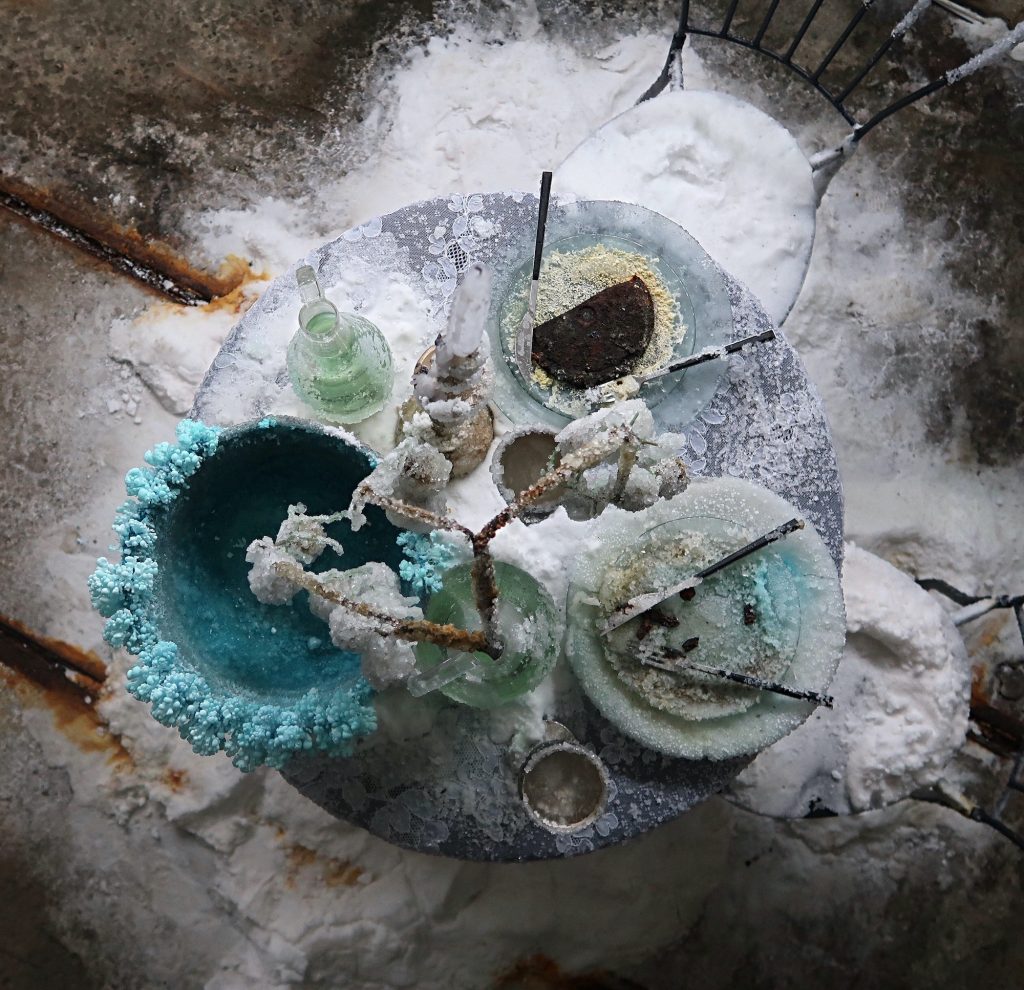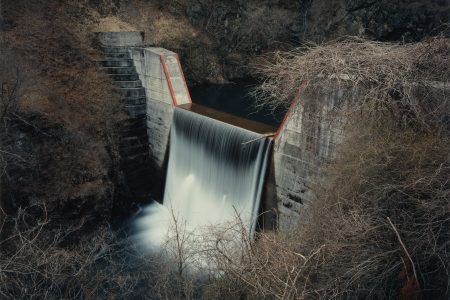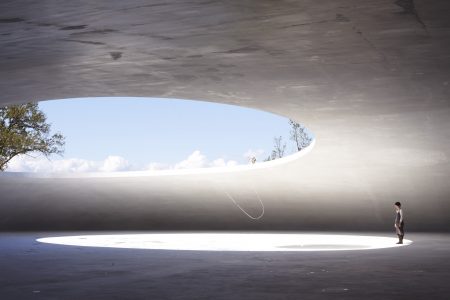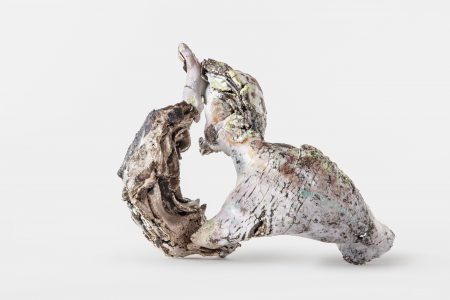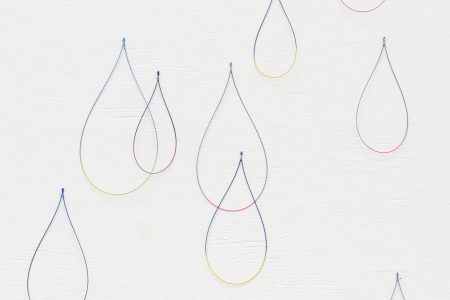
Emanuele Coccia – Artists are the New Shamans
For TLmag36, Emanuele Coccia spoke with Sibylle Grandchamp about his ideas on nature, the role that culture can play in our understanding of the landscape, and how artists can help guide us to better engage in the seismic changes the world is experiencing.
He can take us far along a journey into the heart of the lives of plants, or open our awareness to the link that each living being shares with the cosmos. Yet, the ‘green’ thinking of philosopher Emanuele Coccia is far from the fashionable romanticism that encourages urbanites to idealise rural life. Quite the contrary. In a noisy Saint-Germain-des-Prés café, he explains why thinking about nature means acknowledging its cultural character, giving artists a major role in inventing new landscapes.
TLmag: In [your book] “The Life of Plants”, you offer a way of understanding the plant world. Why invite neophytes to observe the world through this new prism?
Emanuele Coccia: It came out of a need to map the world. The impact of technological, political and cultural changes has dropped us into a totally unfamiliar world; most of the knowledge we have is poorly ordered or organised. It is as if we are all Adam and Eve, obliged to take on the task of renaming things.
TLmag: Could we speak of a paradigm shift?
E.C.: It is more than that. This isn’t just a move from punk fashion to hippie fashion. The world is experiencing true change. Overnight, where there were mountains, there are now plains. I have the impression that the maps that I have been given are false, and that it is not even worth correcting them. We have to completely reshuffle the cards.
TLmag: With the climate emergency and the Covid crisis, we have seen a lifestyle craze for everything plant and natural. Why this sudden need for nature?
E.C.: It clearly comes from our inability to recognise ourselves in this new landscape. We are in the process of recognising a psychic life in those beings who were considered more or less excluded from this depth of living. The integration of nature can no longer be achieved by clinging to romantic imagery. It can only be achieved if we associate with natural beings what we acknowledge for humans.
TLmag: Guerrilla gardening, neighbourhood nurseries… Isn’t building natural landscapes in the city a little artificial?
E.C.: We must acknowledge this artificiality. The ability to produce a culture must pass through such artifice. It is not by “renaturalising” humans, by returning to life in the wild, in a cabin, that we will reconnect with nature.
TLmag: “Homo urbanus” desires a connection with nature, but is he really coming within reach?
E.C: The reintroduction of natural species in the city goes beyond giving us a feeling of connection with nature; it can forge real, cohabitative relationships with plants or beings that do not have the same shape as ourselves.
TLmag: You say that in order to enter a relationship with nature or the landscape, we have to draw on stories. What do you mean?
E.C.: Stories connect us to others. They are the most efficient instrument to process an experience, store it and structure it. Every time we construct landscapes, we construct a story that tells us about this ability to come into sensitive contact with nature. But until now, most of the natural beings have been excluded from these stories. Landscapes were the only place where we allowed ourselves the freedom to meet with nature through images and stories, and not through objective and scientific knowledge.
TLmag: So, a landscape is thus inevitably linked to an imaginary representation?
E.C.: The landscape is born at that exact moment where natural science claims a direct and immediate access to everything that is of the natural order. As man is excluded from this immediate relationship with nature, landscapes make it possible to create a real communion with this lost totality. Previously, they were a sort of consolatory remedy for what science had made impossible for us. Now, they have acquired a major role in defining what these new relationships would be with a nature that has become a set of subjects, and not a set of objects.
TLmag: You just gave us the definition of the landscape. What then is the definition of nature?
E.C.: The word “nature” comes from the Latin root “nasci: to be born”, therefore nature is all those who share a birth, in the biological sense of the term. A birth is strange because to be born means to live in the body of another. The word nature has bloomed to mean something universal for all beings… The problem is that this sharing has not been very egalitarian, since humans have claimed superiority over the others.
TLmag: Why can’t mankind manage to cooperate with nature?
E.C.: Fundamentally, there is no desire to cause trouble, just a desire for self-preservation and defence, in order to ensure a form of survival. I always find it hard to associate dominance with meanness to others. The ecological debate should stop using the metaphor of the master who oppresses, and supplant it with the metaphor of the sorcerer’s apprentice, which would be fairer.
TLmag: The approach of a landscape architect, like Bas Smets, stems from the invention and total creation of new landscapes, far removed from the pseudo-reconstruction of nature in the city. Is reflection on the landscape the future of ecology?
EC: I think that essentially, the landscape is better able to solve our questions than traditional ecology. First of all, because a landscaper can never escape from effective reflection with others, he must always think about the position of man within his living space. In that sense, he is always aware that what he is doing is artificial. Landscape theory and practice must be seen as the one and only ecology; the only one that does not put the human condition on hold.
TLmag: How did you meet Bas Smets?
E.C.: He was presenting his documentary on Biosphere 2 in Paris and we had a public dialogue. He is one of the few contemporary landscape architects who combines the rejection of any form of romanticism with a great ecological passion. His idea of biospheric town planning makes it possible to think about the artificiality of any living installation, and thus makes landscape theory a true ecological science.
TLmag: Are we heading towards the end of a nature / culture rupture?
E.C.: The rupture does not come from the fact that we want to be more “on the side of nature” but rather that we have discovered, in nature, new peoples whose languages we do not know. Once we begin to recognise that dogs, pangolins or plants are subjects, that animals speak or give themselves names… It is clear that there is a culture in nature.
TLmag: What is the role of artists in this evolving world?
E.C.: Artists are the real shamans. They have the vocabulary, the grammar, the gymnastics… To talk about the land, you need a theatre. To speak of “being in the world”, you need a dance scene. The conversation with nature must pass through a sensitive relationship.
TLmag: In what form would you like to become “other”?
E.C.: In the shape of the wind.
TLmag: What does your imaginary landscape look like: the one you have never yet encountered?
E.C.: It would be to perceive in the sky a celestial, meteorological and astrological portrait of terrestrial landscapes.
TLmag: The sky is typically a moving landscape… Man cannot seem to come to terms with this state of transformation inherent in the existence of all living things. Why is there this impossibility of feeling ourselves as one with “nature”?
E.C.: It’s not that we can’t, it’s that nature is deceptive. We let ourselves be deceived by the forms, we fix on an eternal postcard of our body, while everything is in fact ephemeral. It takes a lot of work to accept change and try to stabilise things. Look at the gardener’s work…
TLmag: Ecology is the big topic of the 21st century. Do you think that humanity can reconcile with nature?
E.C.: I don’t believe that humanity has lost its meaning in the face of nature. We have never known so many catalogued species, we have never invented so many forms to create landscapes. There are many actors in the process of producing this movement. For the younger generations, the ecological issue has replaced that of salary or profit. The only problem is that we are in a rush. And it takes time.
TLmag: Why is the environmental issue so complex to understand?
E.C.: The important stance today is that the environment is not different from us. We are all of the same substance; we are all immersed.
“The Life of Plants: A Metaphysics of Mixture”, ed. Polity Press, 2018
@unicamens
Photo of Emanuele Coccia by Frank Perrin

